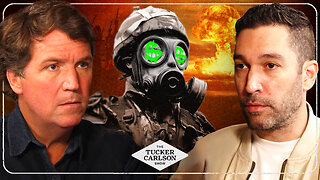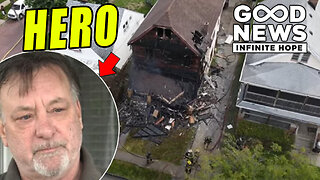Drones crowding Ukrainian skies turn gray areas into "death zones"
As the skies above the war zone in Ukraine are patrolled by countless drones hunting for any sign of movement, Ukrainian and Russian forces have little to no way to move across the battlefield without being spotted and killed. The Washington Post reported this.
The Ukrainian military noted that the growing number of small drones in Ukraine has turned the area on both sides of the line of contact, commonly referred to as the grey zone, into a "death zone". This means that those who dare to move day or night under the watchful eye of adversary drones are immediately killed.
Journalists reported that the cheap drones deployed in Ukraine have transformed modern warfare, and initially gave Ukrainian forces an advantage on the battlefield.
However, the Russians swiftly caught on and commenced large-scale production of their own drones.
Experts term the current stage of the war the "blitzkrieg drone warfare", and admit that it is a stalemate, as if any person is out in the open, they are immediately hunted.
"But the saturation of drones, many with thermal cameras that work at night, has also shrunk the space where troops can move safely without being spotted — leading to high casualties and, in recent months, largely preventing either side from making major breakthroughs", the Washington Post said.
Cheap drones deployed in Ukraine have transformed modern warfare — and initially gave Ukrainian troops an advantage on a battlefield where they are perpetually outnumbered and outgunned. “This is the evolution of our survival,” Oleksandr Nastenko, commander of Code 9.2, a drone unit in Ukraine’s 92nd brigade said. But the Russians quickly caught on and began mass producing their own drones. What followed was an overabundance of disposable, deadly drones and electronic warfare devices known as jammers that disrupt their flights. Most common are first-person-view, or FPV drones, typically controlled by a pilot wearing a headset and holding a remote controller.
The technological advances probably have saved lives because drone pilots can work slightly farther from the zero — or contact — line than traditional infantry. But the saturation of drones, many with thermal cameras that work at night, has also shrunk the space where troops can move safely without being spotted — leading to high casualties and, in recent months, largely preventing either side from making major breakthroughs.
-
 LIVE
LIVE
WeAreChange
58 minutes agoUNEXPECTED TAPE: P. DIDDY VIDEO DROP: 8 years later, WHY now?
1,539 watching -
 DVR
DVR
In The Litter Box w/ Jewels & Catturd
18 hours agoPolice State | In the Litter Box w/ Jewels & Catturd - Ep. 570 - 5/17/2024
12.1K14 -
 LIVE
LIVE
Twins Pod
1 hour agoTwins Pod - Episode 13 - Tim Kennedy: Seals Vs Green Berets, Tigers Vs Bears, & Israel Vs Palestine
2,148 watching -
 2:21:43
2:21:43
Tucker Carlson
23 hours agoDave Smith: Russia, Israel, Trump & the Swamp, Obama, and the Media Attacks on Joe Rogan
95.5K296 -
 DVR
DVR
shaneyyricch
1 hour agoPERMANENTLY BANNED ON YOUTUBE - LETS RUMBLE
1.27K1 -
 DVR
DVR
Stephen Gardner
42 minutes agoNew Trump Testimony DESTROYS Michael Cohen HUSH MONEY case!
-
 39:11
39:11
Line Drive Podcast
1 hour agoHarrison Butker is the left's new Enemy #1!
1.93K2 -
 DVR
DVR
Turtleboy Daily News
7 hours agoKaren Read Trial Day 14
28.4K10 -
 1:29:10
1:29:10
Nina Infinity
16 hours agoGOOD NEWS - Infinite Hope # 185
10.1K5 -
 33:49
33:49
TudorDixon
4 hours agoTransparency and Accountability in Schools with Corey DeAngelis | The Tudor Dixon Podcast
9.31K11